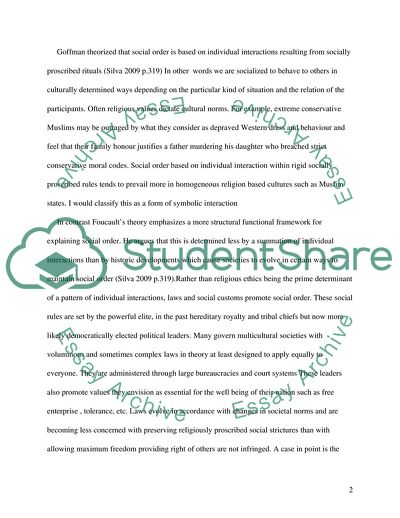Cite this document
(Goffman and Foucault Approaches to the Ordering of Social Life Essay, n.d.)
Goffman and Foucault Approaches to the Ordering of Social Life Essay. https://studentshare.org/sociology/1828925-compare-and-constrast-two-social-science-views-about-the-ordering-of-social-life
Goffman and Foucault Approaches to the Ordering of Social Life Essay. https://studentshare.org/sociology/1828925-compare-and-constrast-two-social-science-views-about-the-ordering-of-social-life
(Goffman and Foucault Approaches to the Ordering of Social Life Essay)
Goffman and Foucault Approaches to the Ordering of Social Life Essay. https://studentshare.org/sociology/1828925-compare-and-constrast-two-social-science-views-about-the-ordering-of-social-life.
Goffman and Foucault Approaches to the Ordering of Social Life Essay. https://studentshare.org/sociology/1828925-compare-and-constrast-two-social-science-views-about-the-ordering-of-social-life.
“Goffman and Foucault Approaches to the Ordering of Social Life Essay”. https://studentshare.org/sociology/1828925-compare-and-constrast-two-social-science-views-about-the-ordering-of-social-life.


